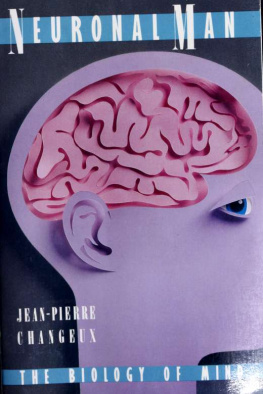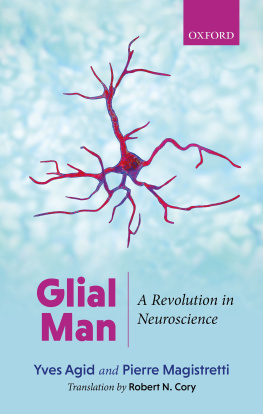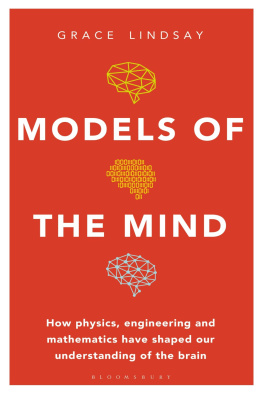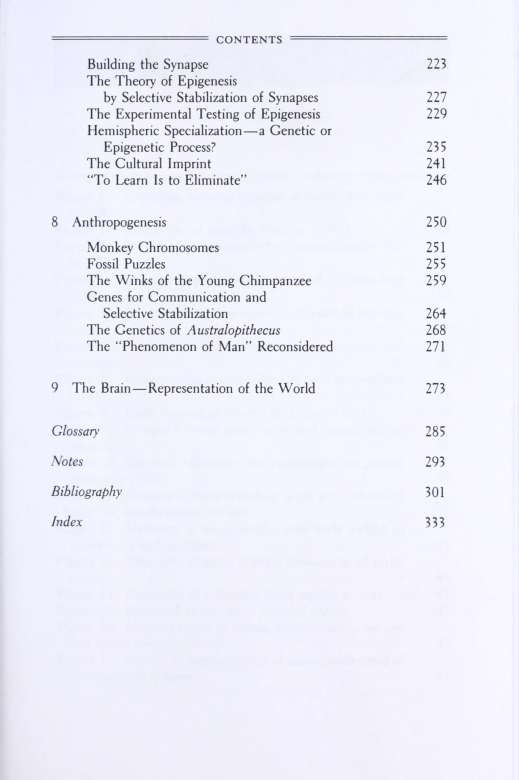Jean-Pierre Changeux - Neuronal Man: The Biology of Mind
Here you can read online Jean-Pierre Changeux - Neuronal Man: The Biology of Mind full text of the book (entire story) in english for free. Download pdf and epub, get meaning, cover and reviews about this ebook. year: 1987, publisher: Oxford University Press, genre: Detective and thriller. Description of the work, (preface) as well as reviews are available. Best literature library LitArk.com created for fans of good reading and offers a wide selection of genres:
Romance novel
Science fiction
Adventure
Detective
Science
History
Home and family
Prose
Art
Politics
Computer
Non-fiction
Religion
Business
Children
Humor
Choose a favorite category and find really read worthwhile books. Enjoy immersion in the world of imagination, feel the emotions of the characters or learn something new for yourself, make an fascinating discovery.
- Book:Neuronal Man: The Biology of Mind
- Author:
- Publisher:Oxford University Press
- Genre:
- Year:1987
- Rating:3 / 5
- Favourites:Add to favourites
- Your mark:
Neuronal Man: The Biology of Mind: summary, description and annotation
We offer to read an annotation, description, summary or preface (depends on what the author of the book "Neuronal Man: The Biology of Mind" wrote himself). If you haven't found the necessary information about the book — write in the comments, we will try to find it.
The human cerebral cortex alone (the rind of the brain whose evolution culminates in man) contains at least 30 billion neurons (nerve cells). As Changeux explains, these communicate with each other at the level of gaps call synapses, which are so numerous that if one counted a thousand of them each second, between 3,000 and 30,000 years would pass before they had all been numbered.
Changeux leads us through this complexity with clarity, elegance of style, wit, and rigor, and then, moving from this solid, factual base, allows us to see the reasoning behind his theory of the biology of the brain. Neither reductionist nor holistic, that is, neither reducing the functioning of the whole to that of its elements, nor seeing a whole that more than the sum of its parts, this method is global, systematic. Each element of the human system contributes to its functioning as a whole, which, in turn, influences the characteristics and development of each element. The accent is on relations and interdependencies.
At once historical and didactic, scientific and philosophical, witty and shrewd, the story he tells is an exciting one of territorial struggles, conflicts of schools, retrogressions, and breakthroughs. We explore a wealth of fact, theory, lore, and speculation, which sets into relief the development of our current knowledge of how the brain works.
Neuronal Man, a brilliant and controversial book, allows us to reconquer our internal space on the basis of a new logic. It bridges the gap between the biological and the social, between body, mind, and soul.
Science writing of the best kind, clear, concise, scholarly, at times even poetic.--Library Journal
Written with great clarity, verve and grace, this detailed report...leads the reader carefully through the intricacies of an emerging science still in its infancy.--Publishers Weekly
Pivotal....What [Changeux] says in this book may have far-reaching effects for years to come.-Booklist
A revolutionary book.-LExpress
Neuronal Man is an event as well as a book....A thrilling exploration of the brain and the mechanisms that control our behavior.--Liberation
Jean-Pierre Changeux: author's other books
Who wrote Neuronal Man: The Biology of Mind? Find out the surname, the name of the author of the book and a list of all author's works by series.
















